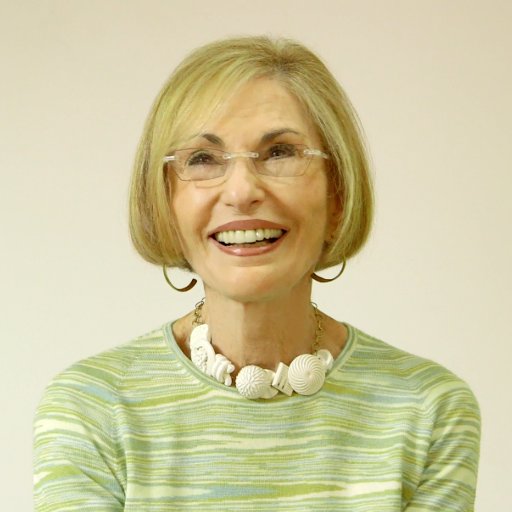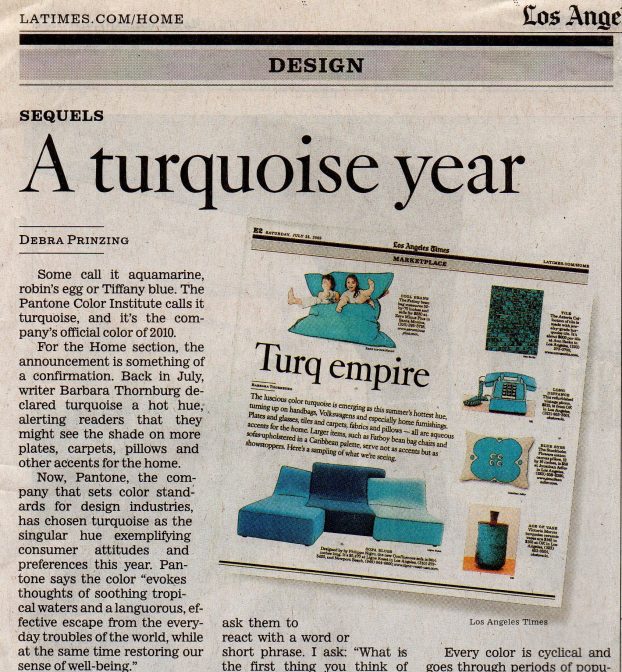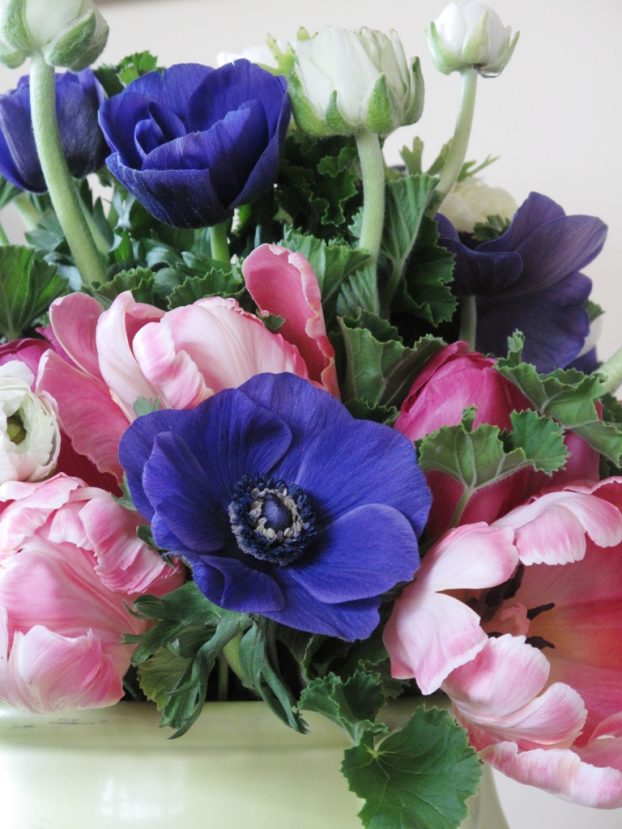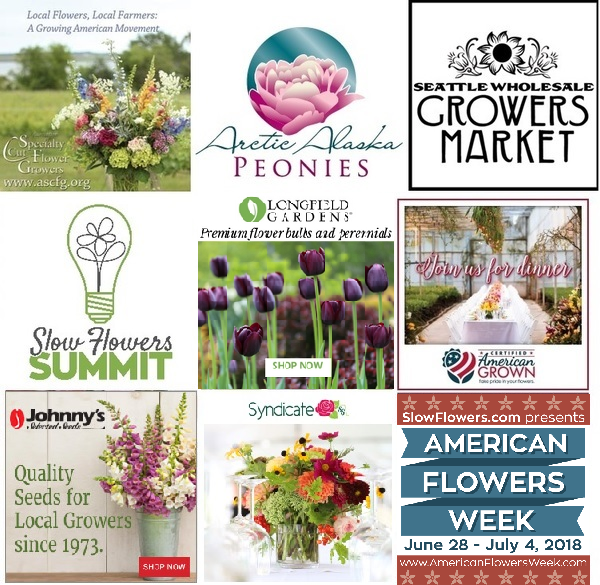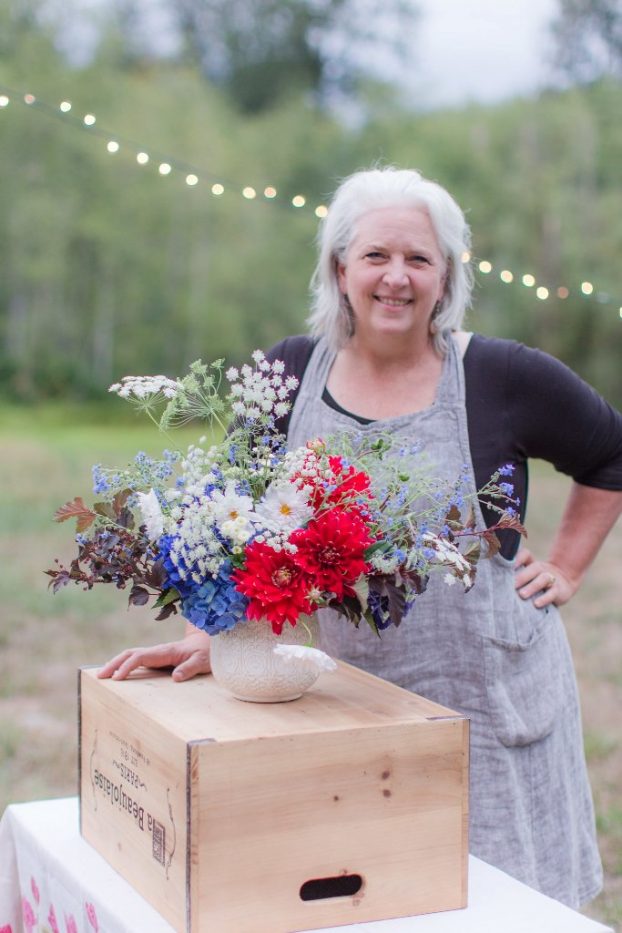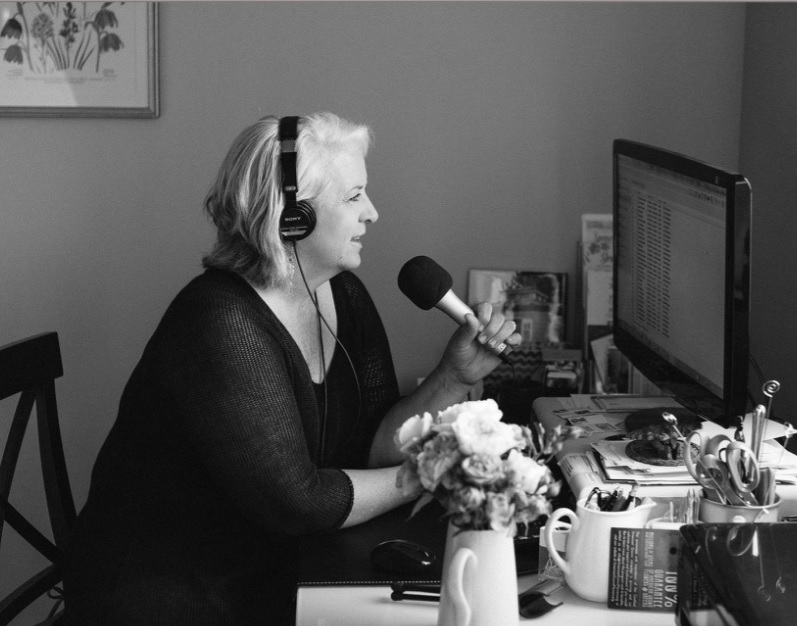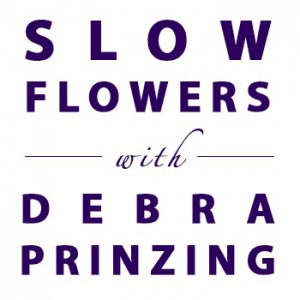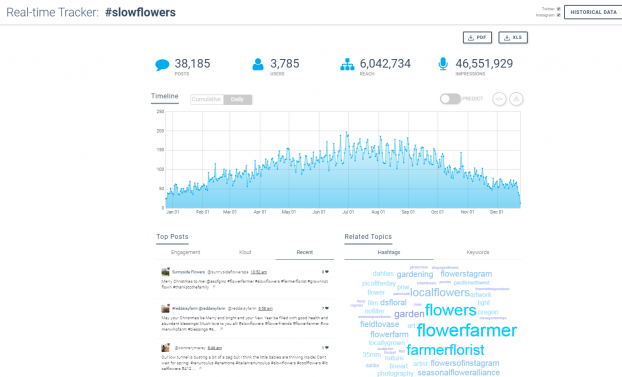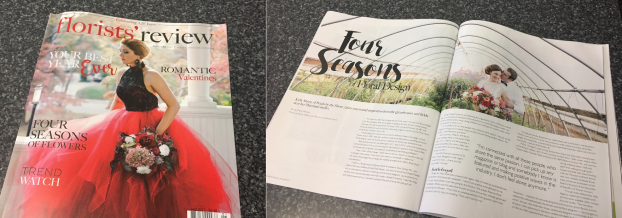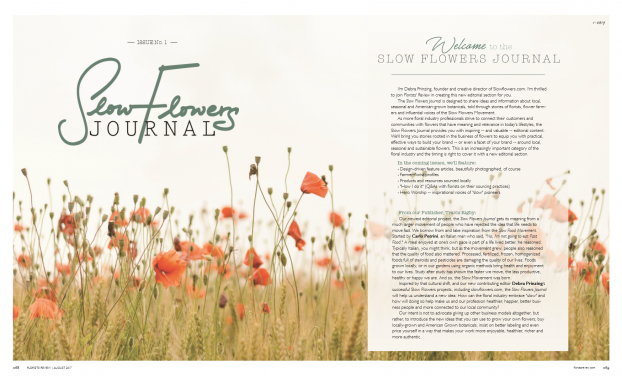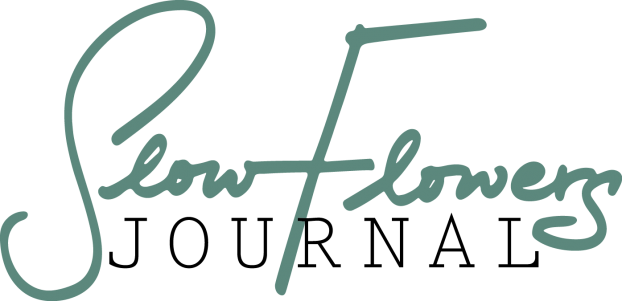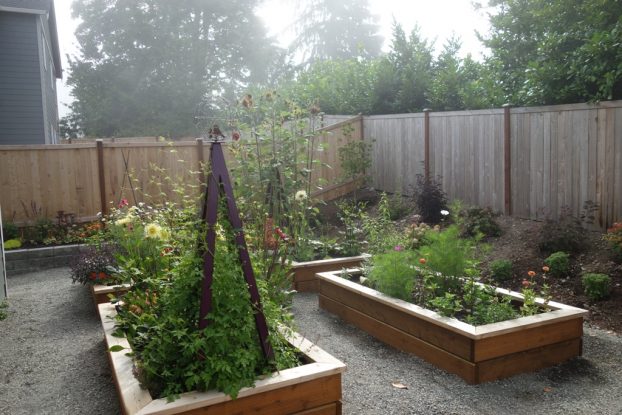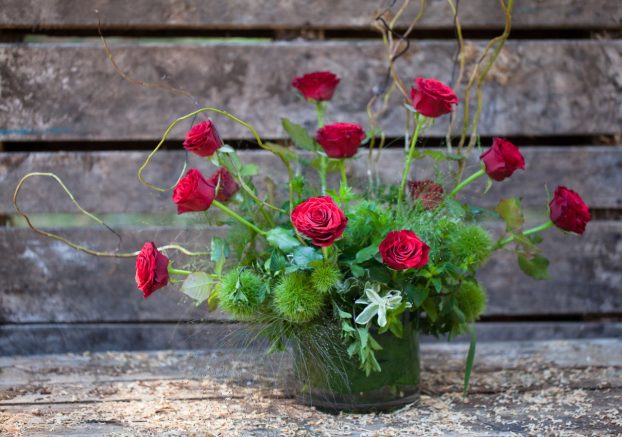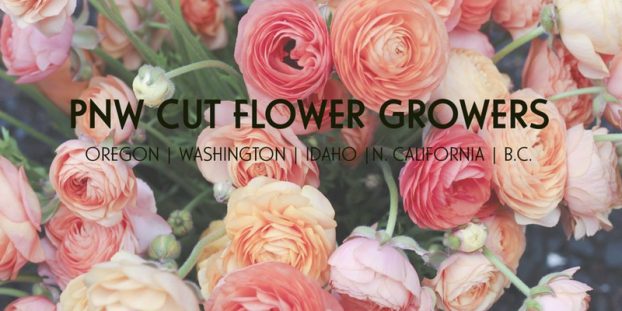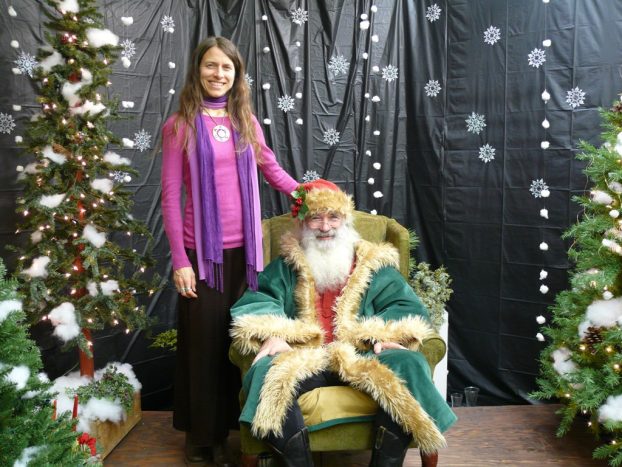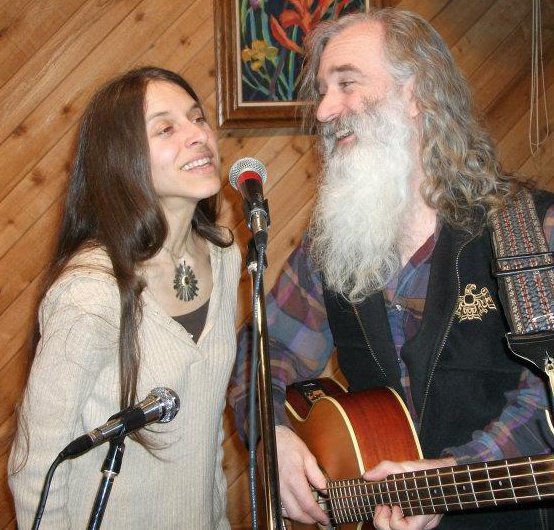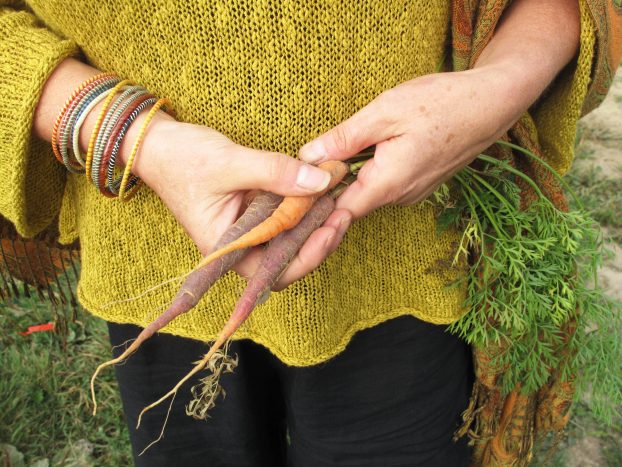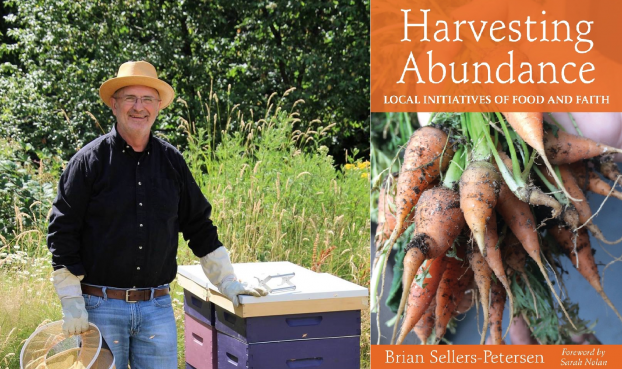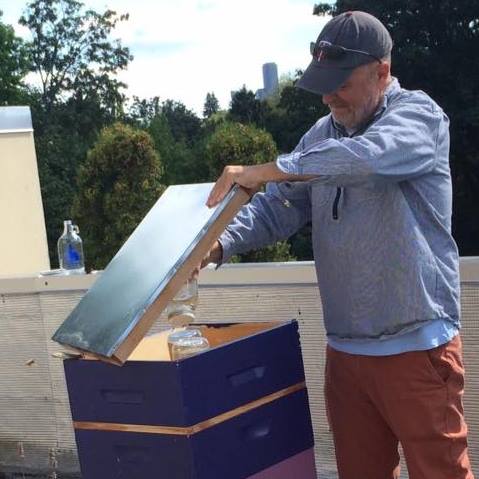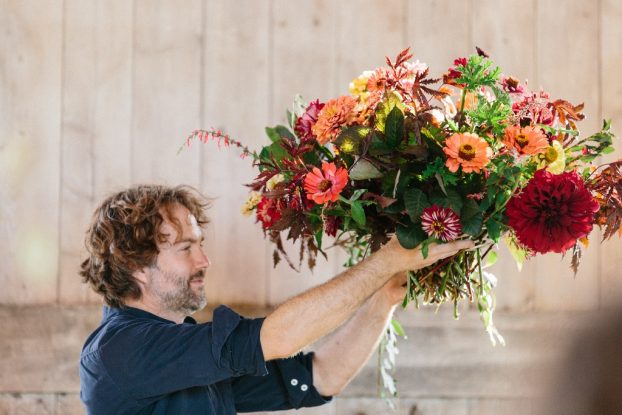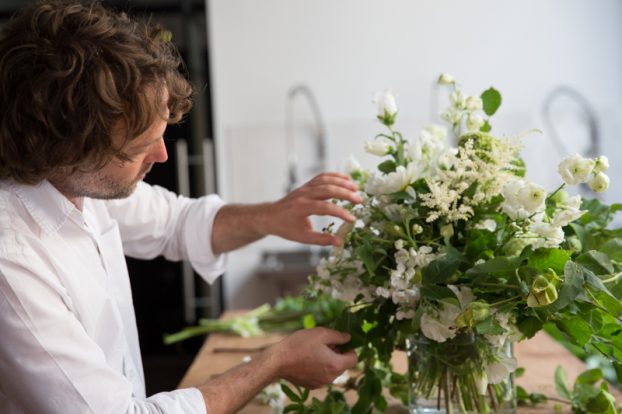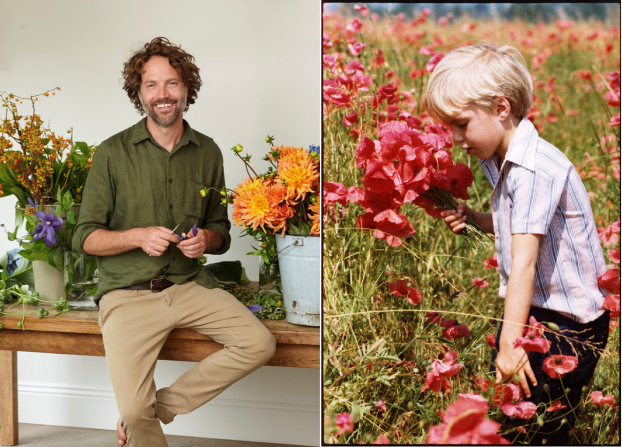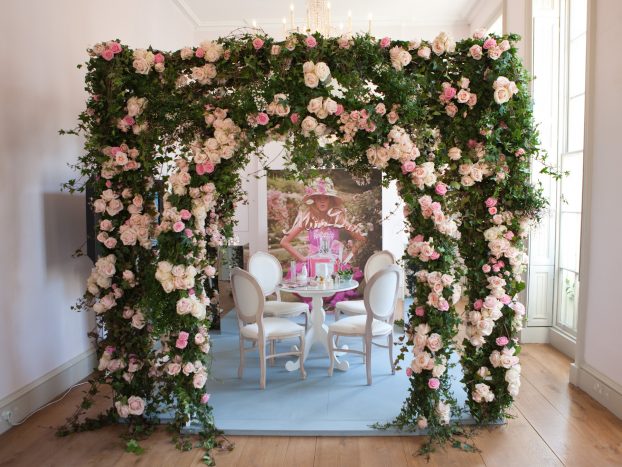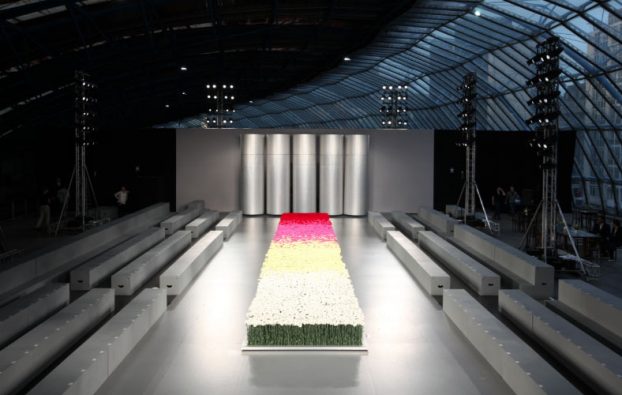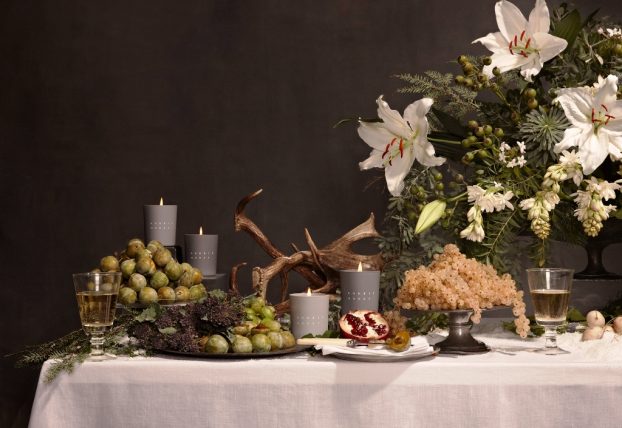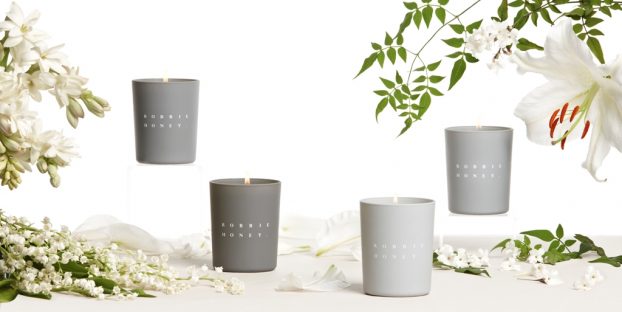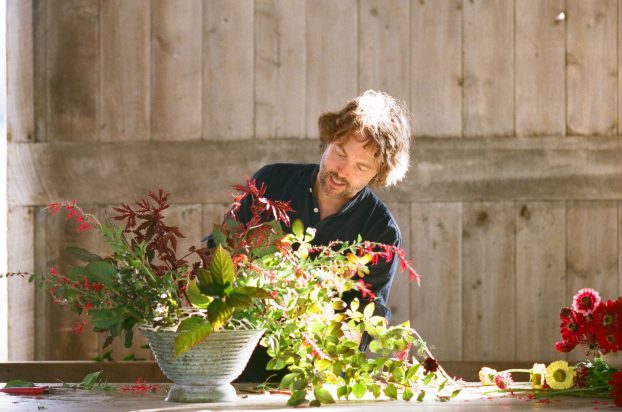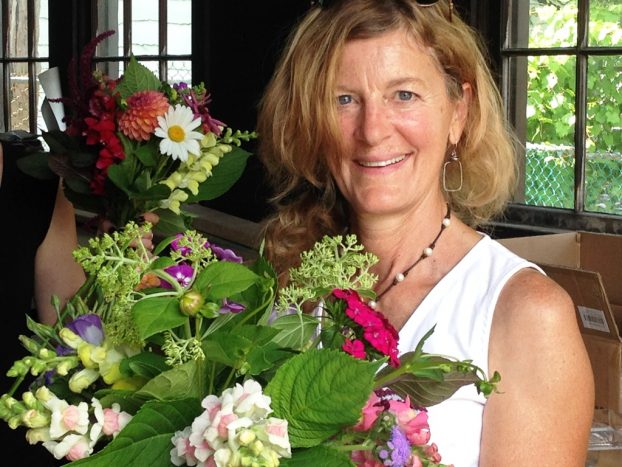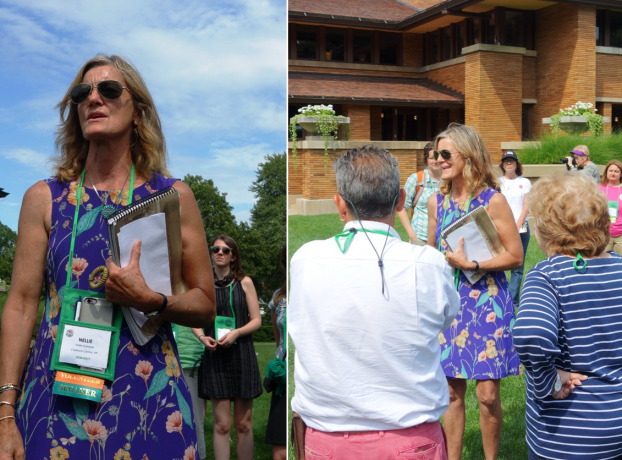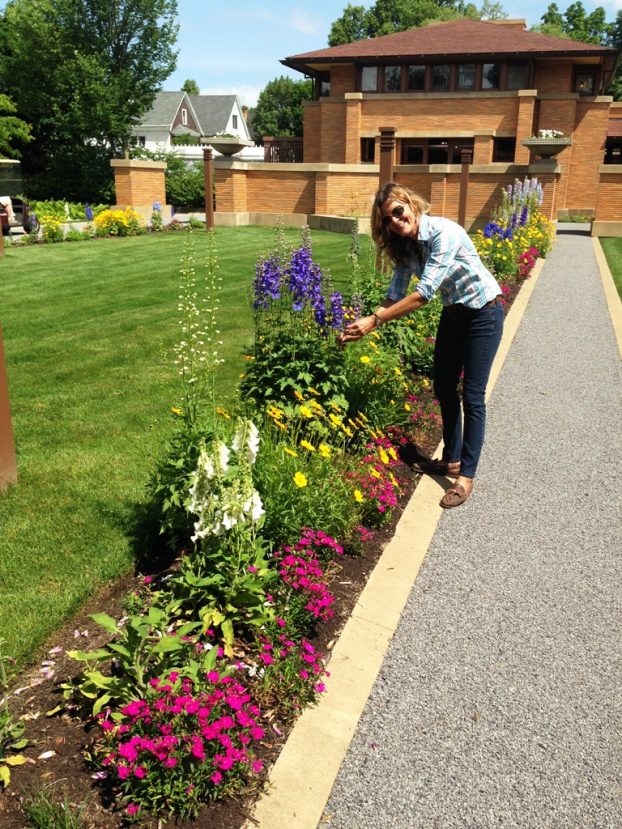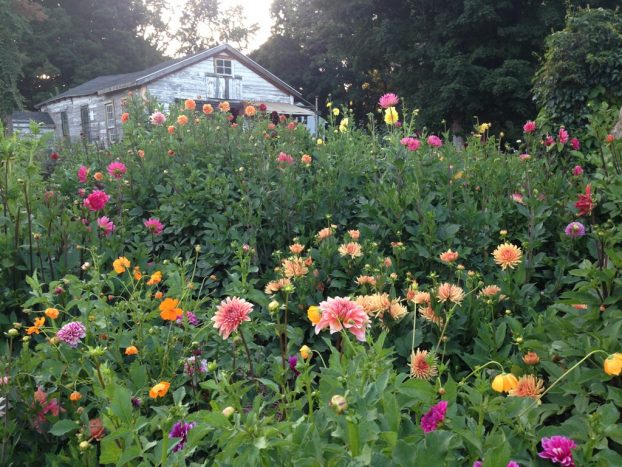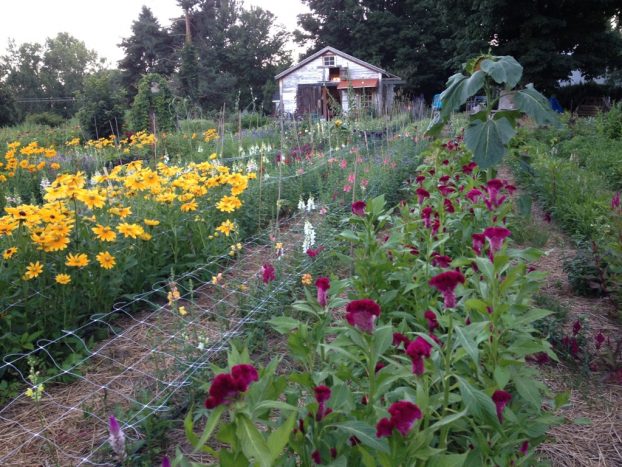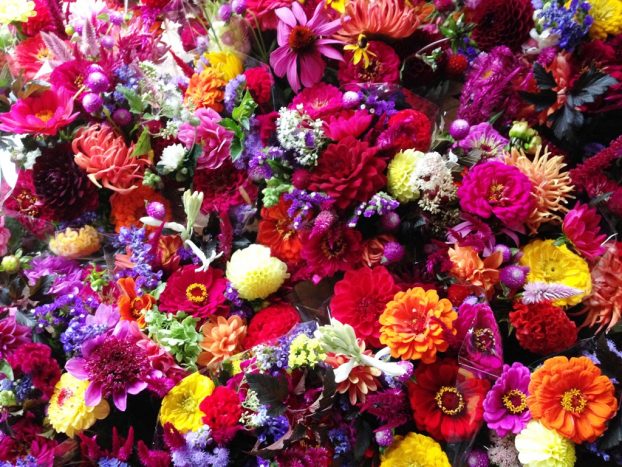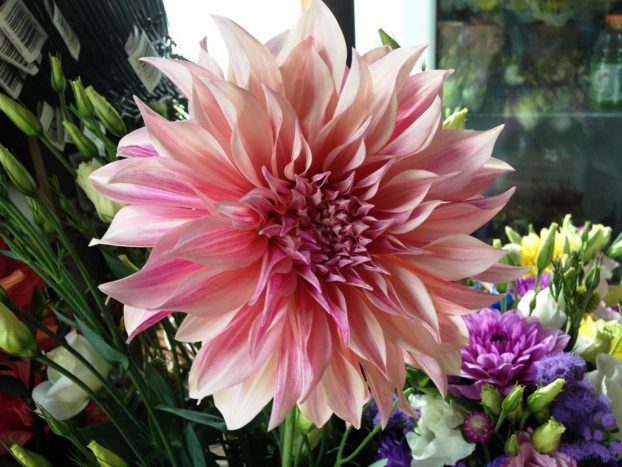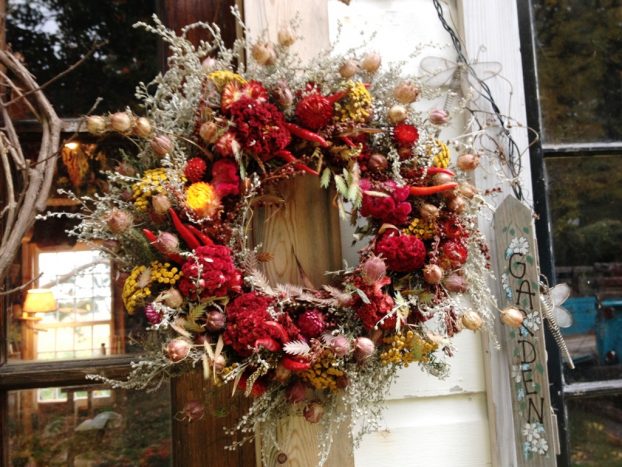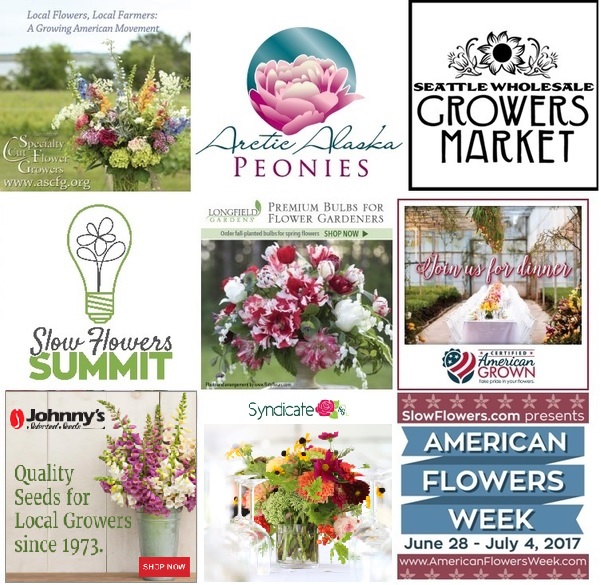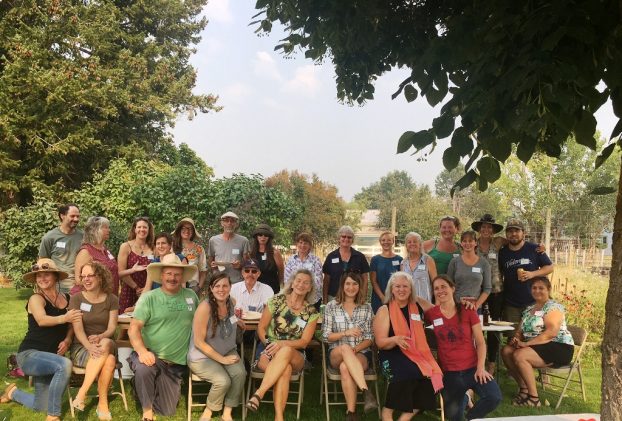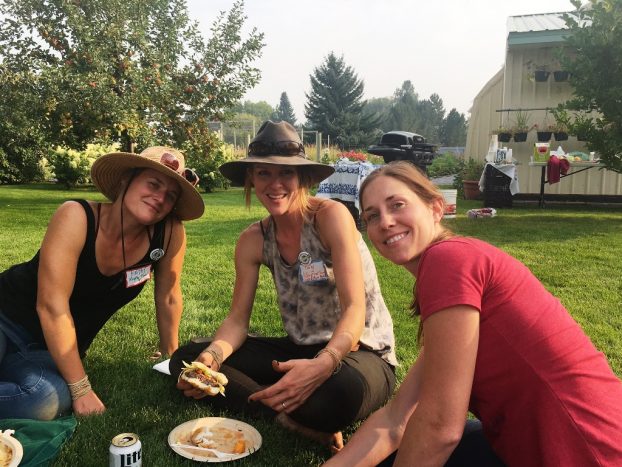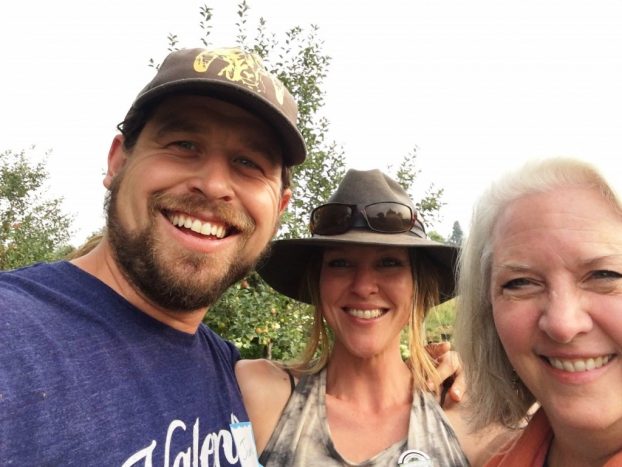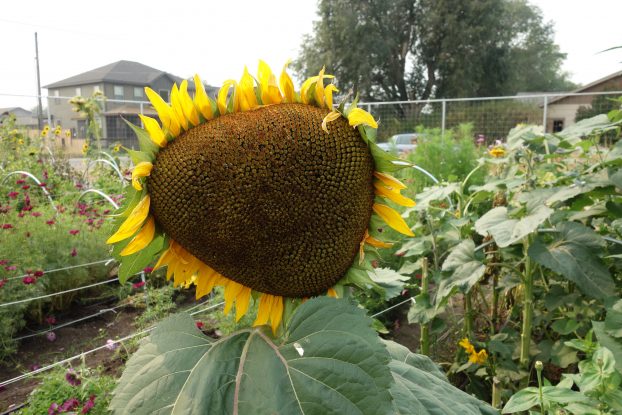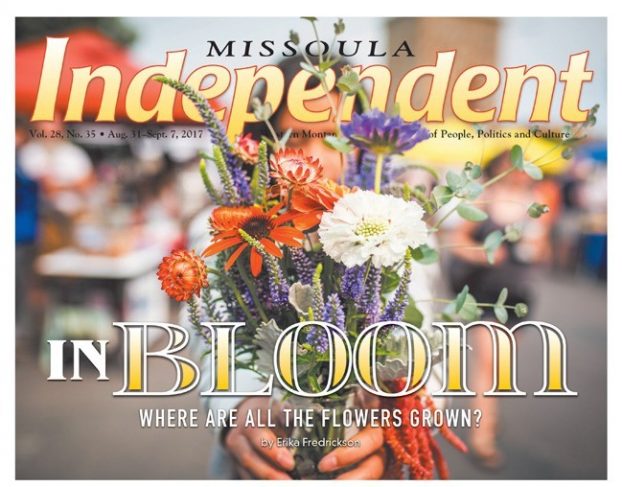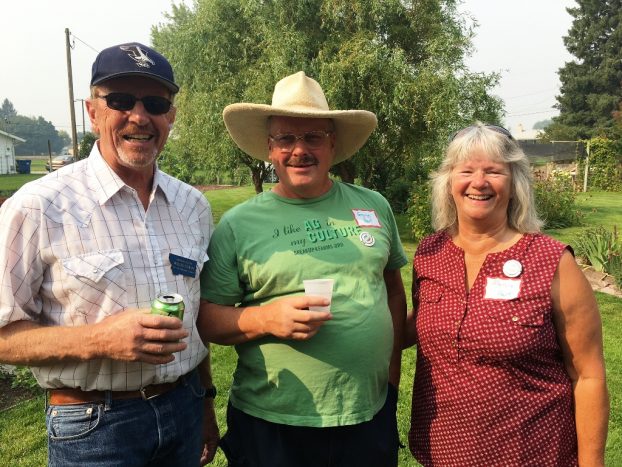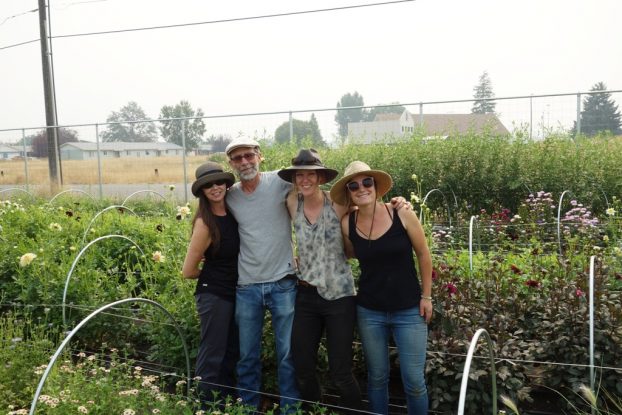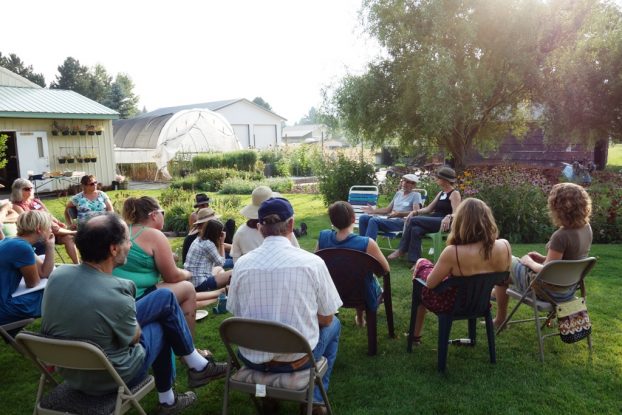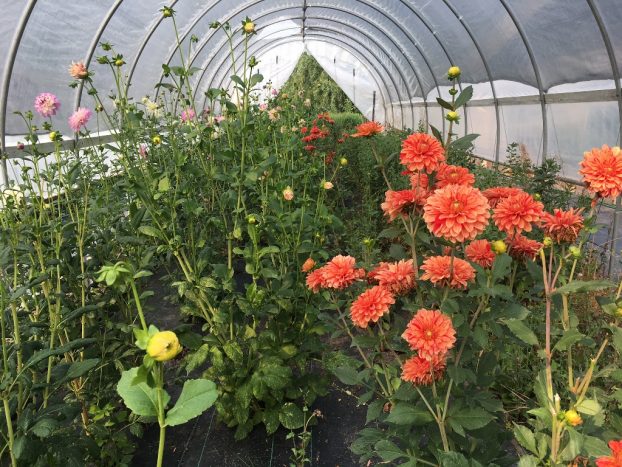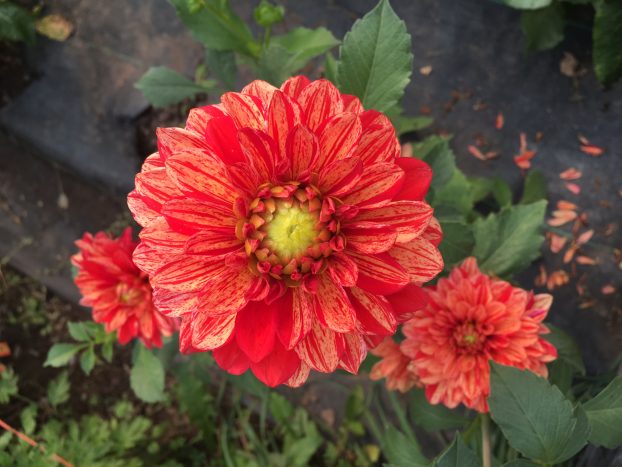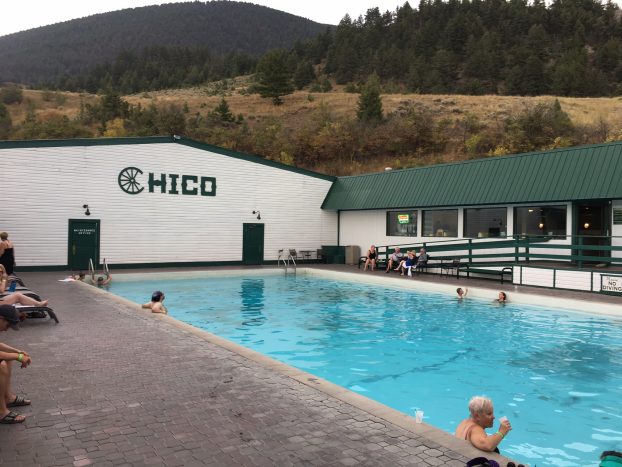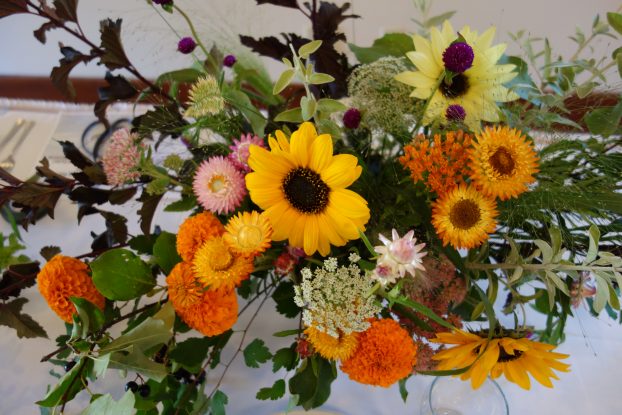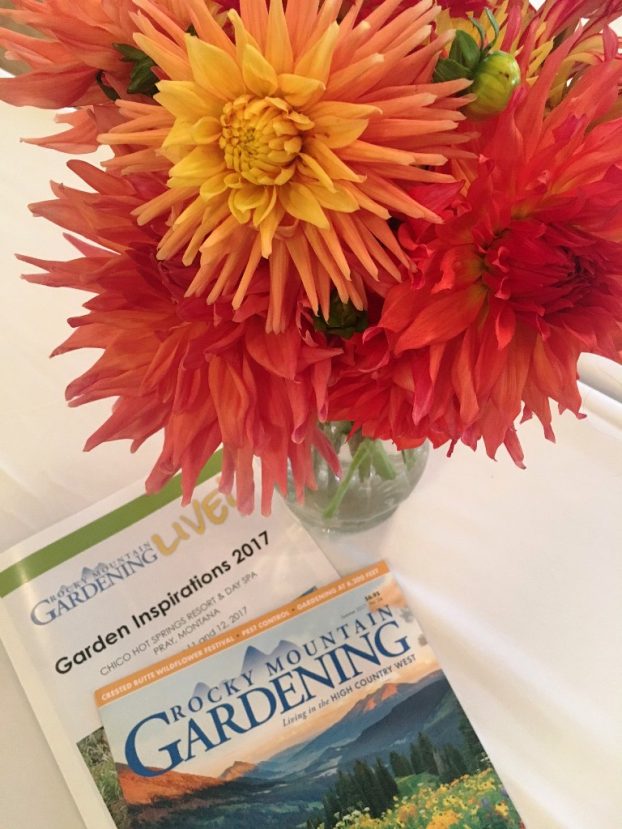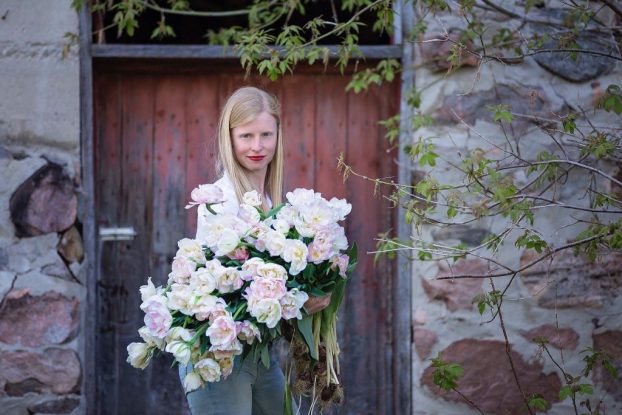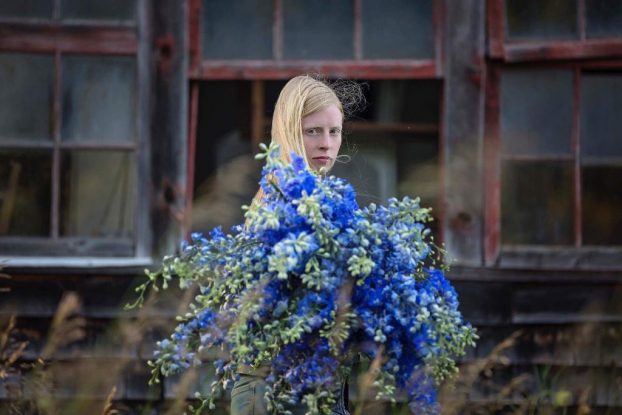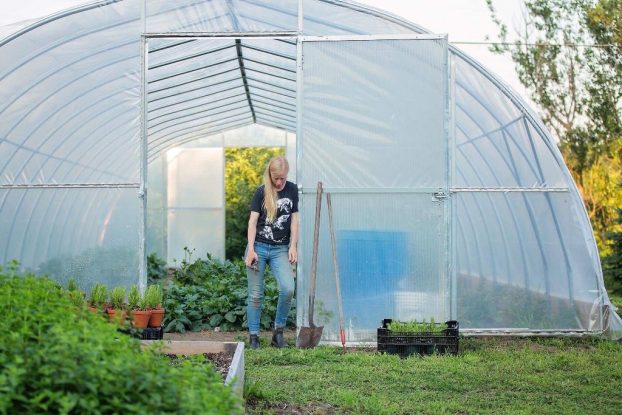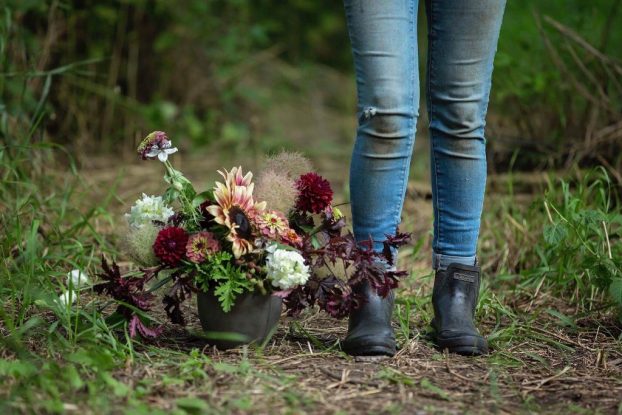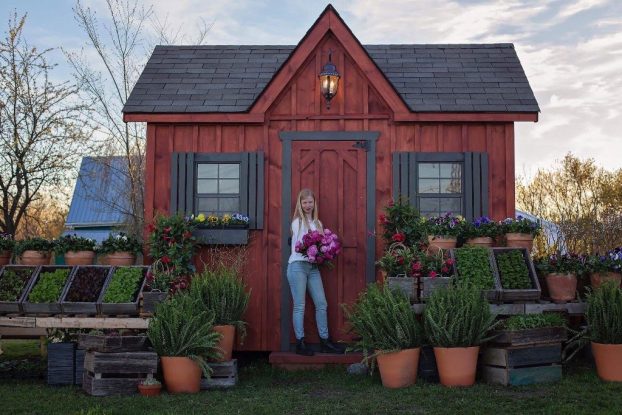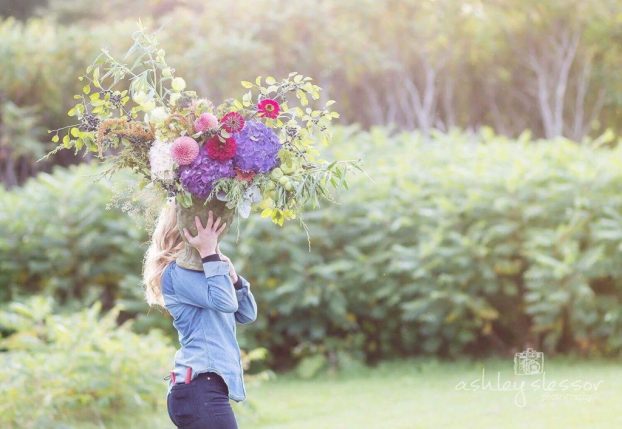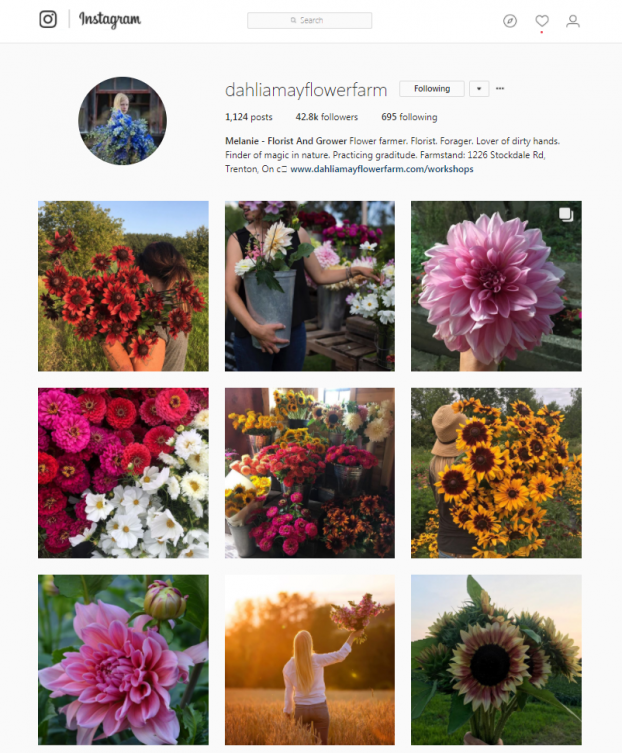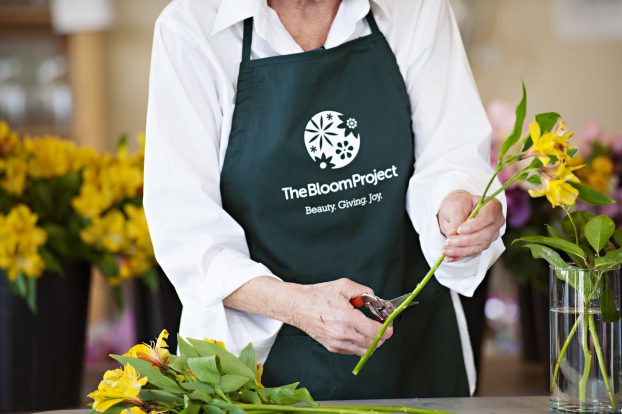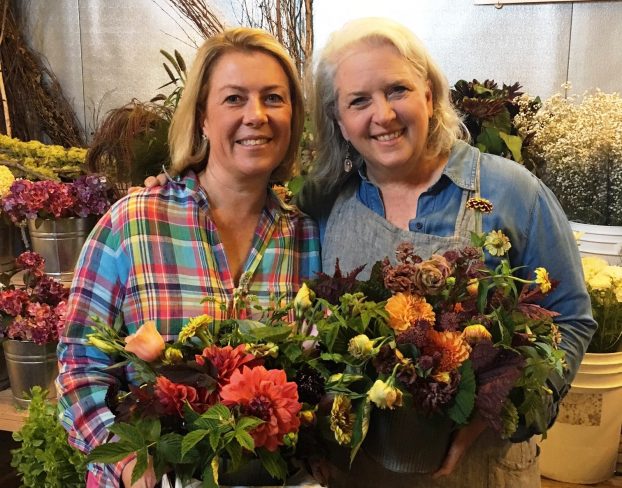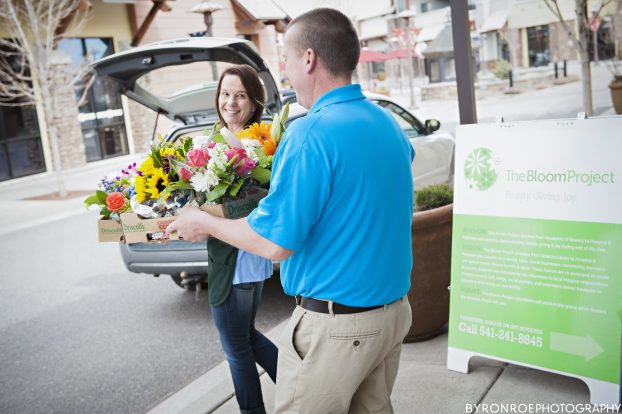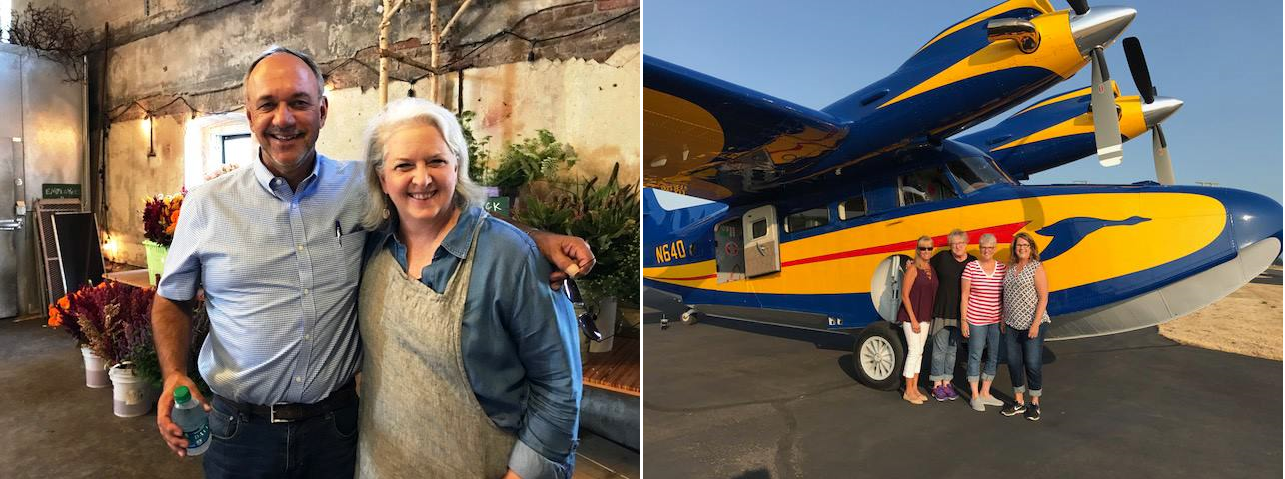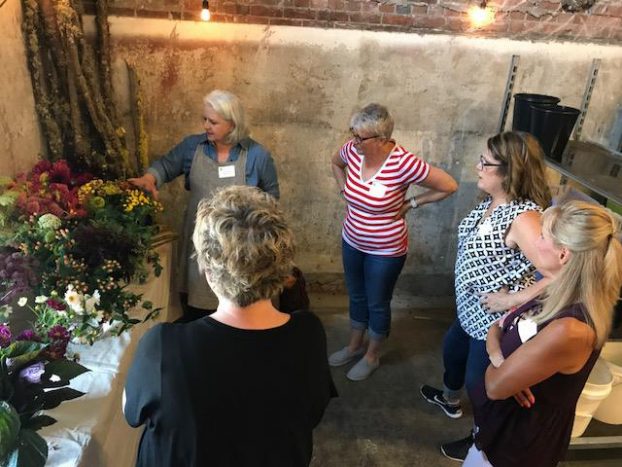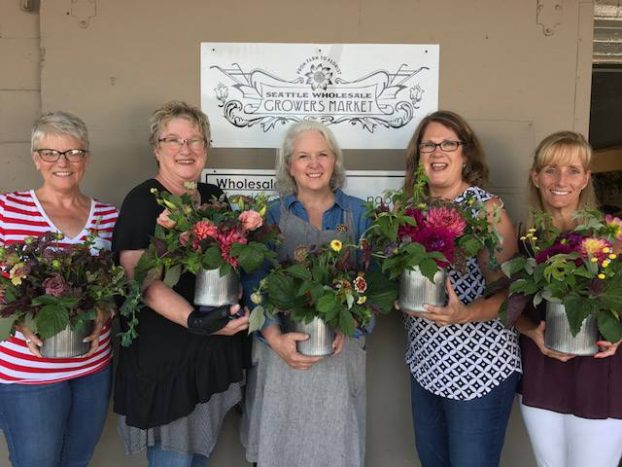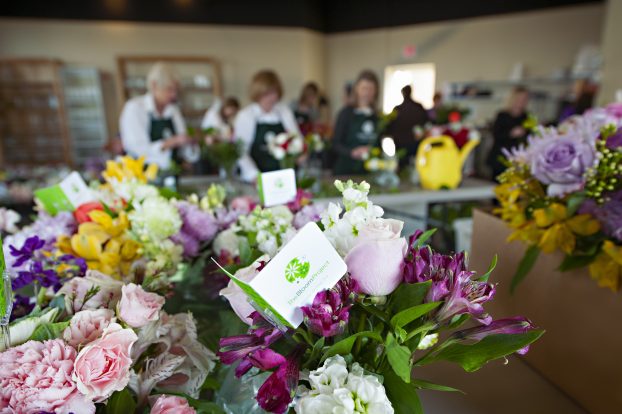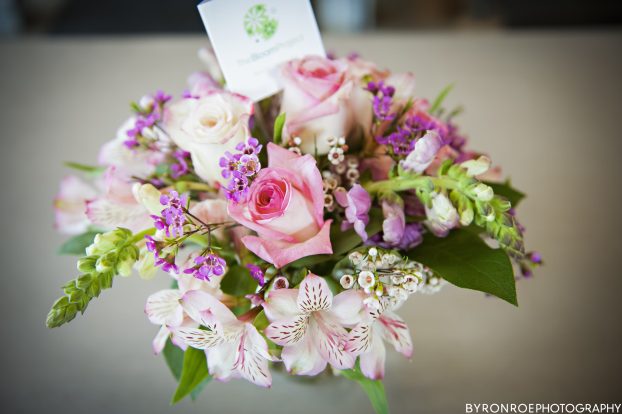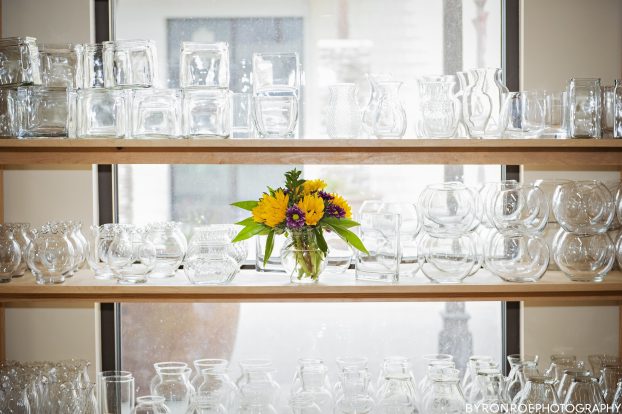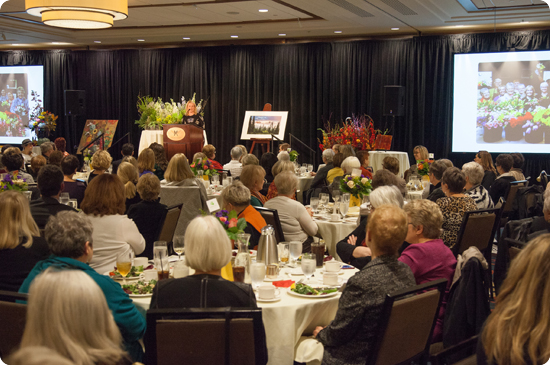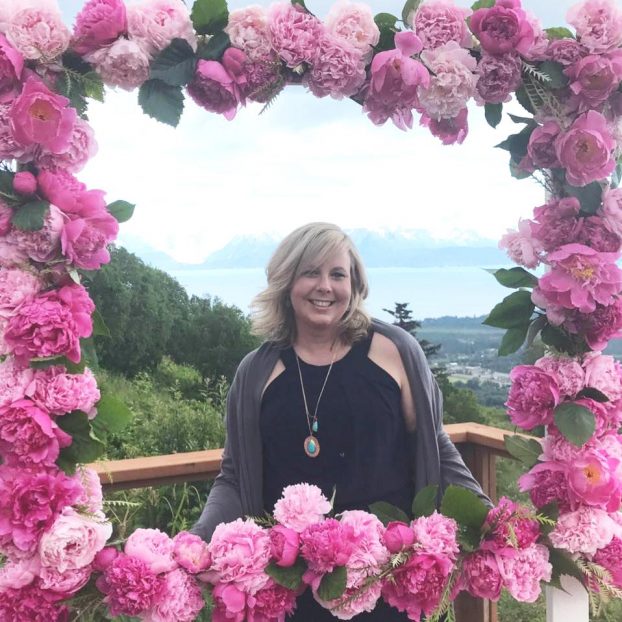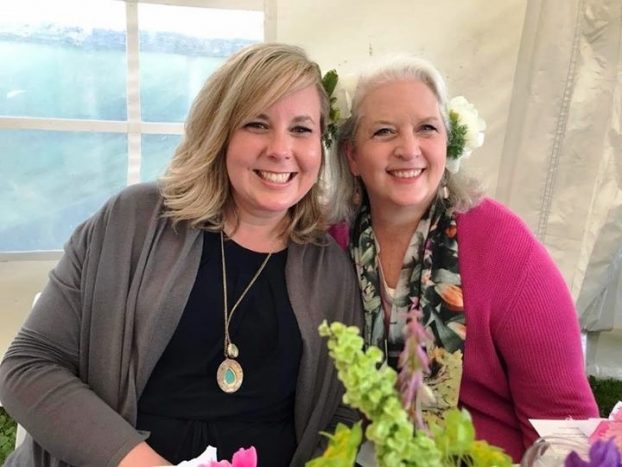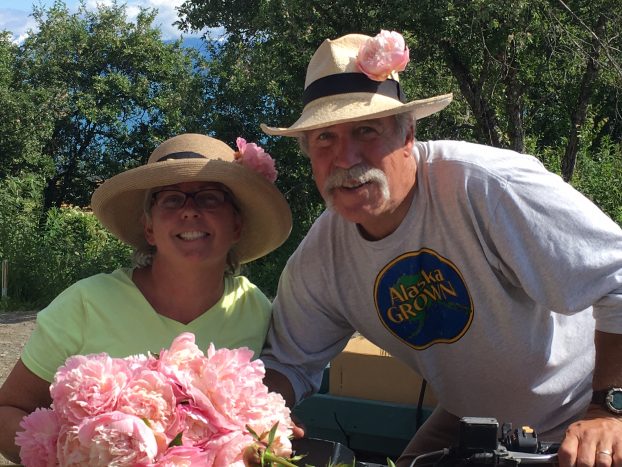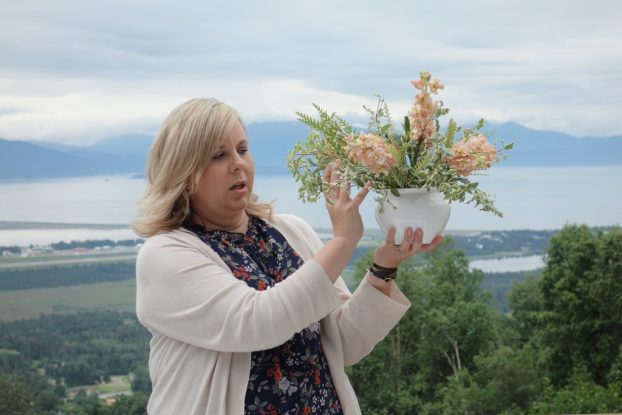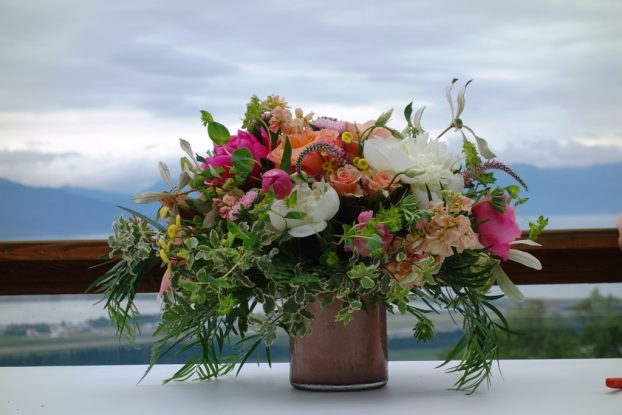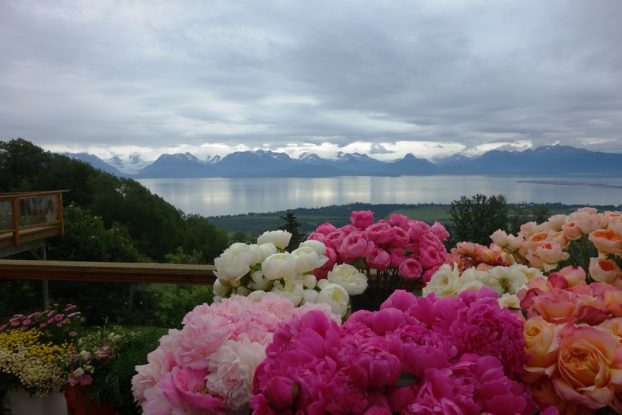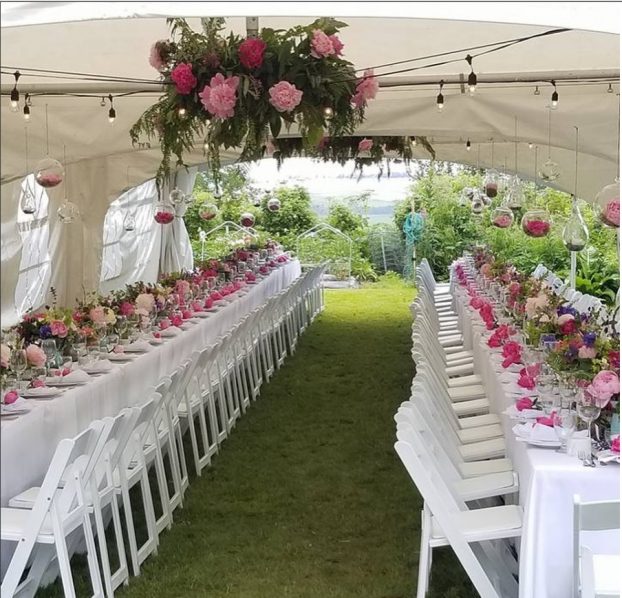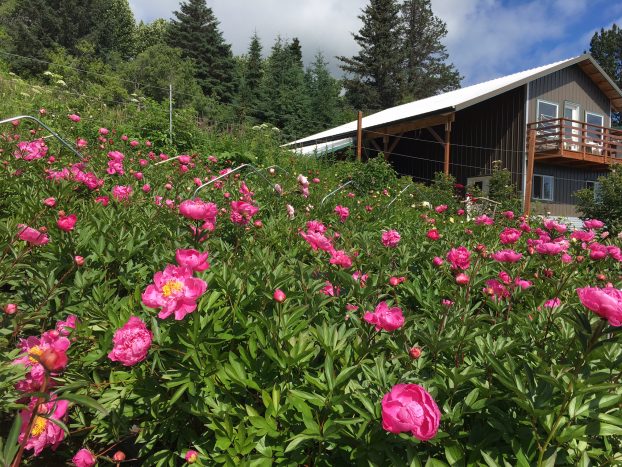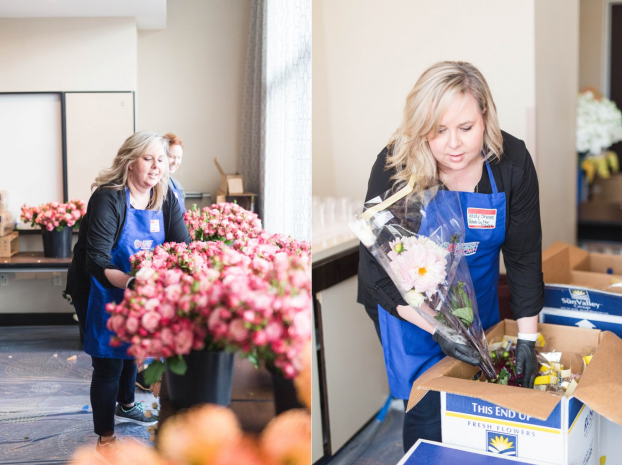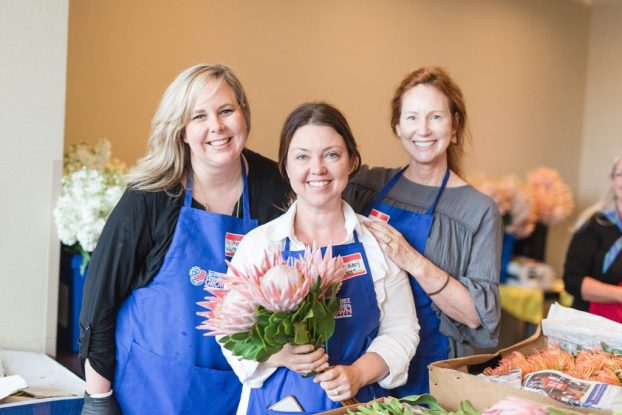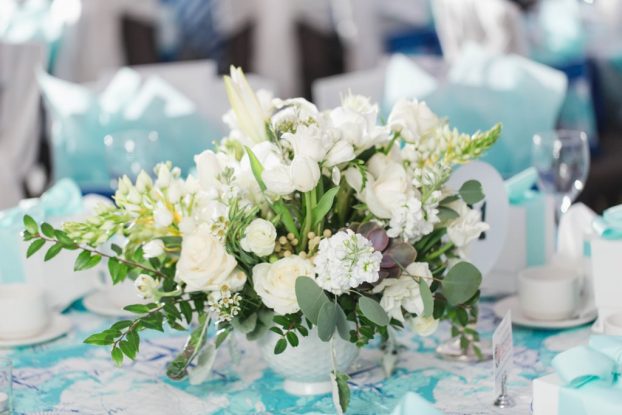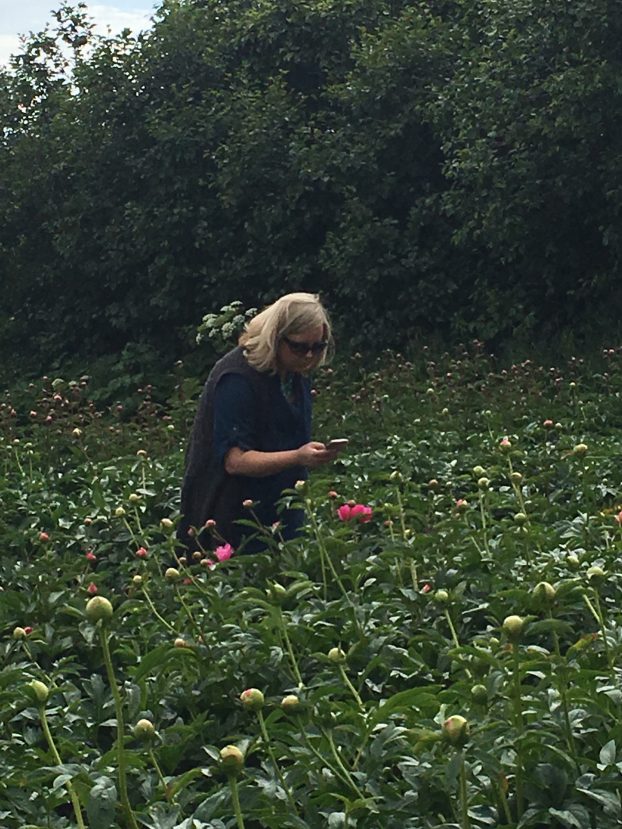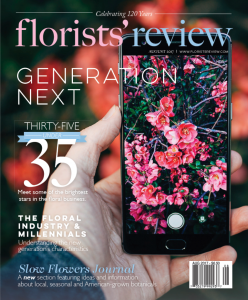Podcast: Play in new window | Download
Subscribe: Apple Podcasts | Podcast Index | RSS | More
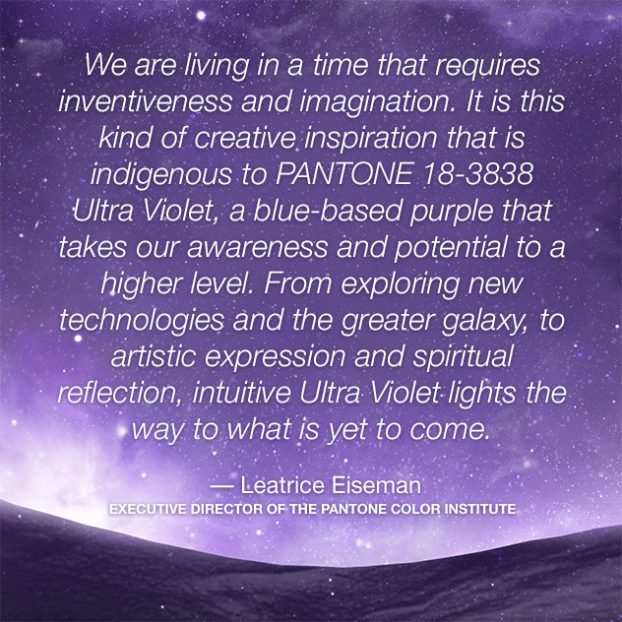 Let’s dive into color — into Ultra Violet, to be specific.
Let’s dive into color — into Ultra Violet, to be specific.
 When I type “Ultra Violet Pantone” in my Google Search, within seconds, no fewer than 3.2 million options pop up. There’s no denying that Pantone’s color-of-the-year campaign — one that began as a conversation about consumer sentiment at the turn of the new millennium — has become one of the most anticipated and influential announcements in the creative industries — from floral and fashion to manufacturing and media. And of course, floral design, flower farming, weddings and events.
When I type “Ultra Violet Pantone” in my Google Search, within seconds, no fewer than 3.2 million options pop up. There’s no denying that Pantone’s color-of-the-year campaign — one that began as a conversation about consumer sentiment at the turn of the new millennium — has become one of the most anticipated and influential announcements in the creative industries — from floral and fashion to manufacturing and media. And of course, floral design, flower farming, weddings and events.
Announced with much fanfare on December 7, 2017, here’s more about this alluring hue, according press material:
A dramatically provocative and thoughtful purple shade, PANTONE #18-3838 Ultra Violet communicates originality, ingenuity, and visionary thinking that points us toward the future.
Complex and contemplative, Ultra Violet suggests the mysteries of the cosmos, the intrigue of what lies ahead, and the discoveries beyond where we are now. The vast and limitless night sky is symbolic of what is possible and continues to inspire the desire to pursue a world beyond our own.
Enigmatic purples have also long been symbolic of counterculture, unconventionality, and artistic brilliance. Musical icons Prince, David Bowie, and Jimi Hendrix brought shades of Ultra Violet to the forefront of western pop culture as personal expressions of individuality. Nuanced and full of emotion, the depth of PANTONE’s Ultra Violet symbolizes experimentation and non-conformity, spurring individuals to imagine their unique mark on the world, and push boundaries through creative outlets.
Historically, there has been a mystical or spiritual quality attached to Ultra Violet. The color is often associated with mindfulness practices, which offer a higher ground to those seeking refuge from today’s over-stimulated world.
I’m incredibly excited to share my exclusive interview with Leatrice Eiseman, Executive Director of the Pantone Color Institute and the spokeswoman for the annual selection that for the third consecutive year has been revealed first in The New York Times.
I first met Leatrice, or Lee, as she is often called, when I attended a color trends presentation that she gave to interior and fashion professionals here in Seattle — probably in the late 1990s. Since then, I’ve interviewed her a few times, including for a story that ran in the Los Angeles Times Home section on Turquoise, the color pick for 2010.
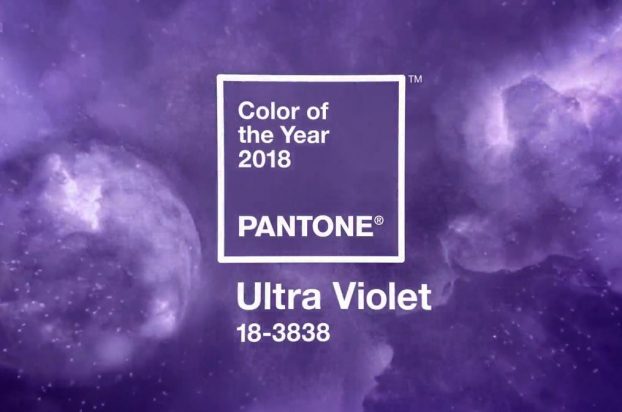
Love this color . . . and, has anyone noticed how similar my SLOW FLOWERS PODCAST Logo is to Ultra Violet?! Cool!
Last week, Lee and I met on Bainbridge Island, a short ferry ride from Seattle, and over dinner we discussed Ultra Violet — and some of the psychological and sociological reasoning behind this epic selection. You’ll want to listen closely for the way Lee describes Ultra Violet as a “now” color, especially the emotional power it imbues on our moods, settings, design palettes and more.
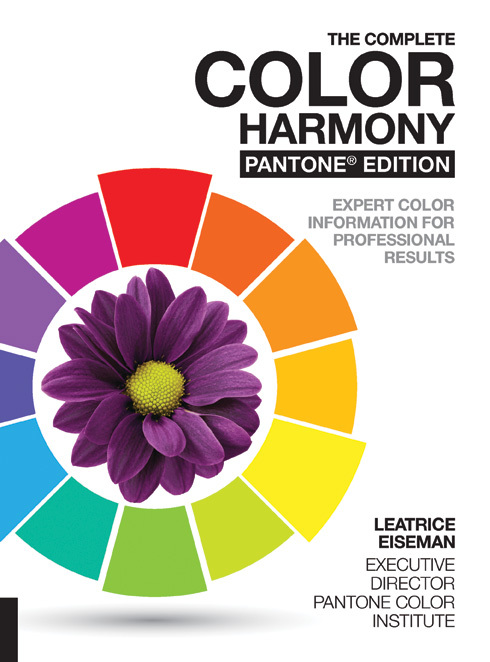 Lee’s newest book is The Complete Color Harmony / Pantone Edition, which we also discussed — it is a perfect handbook to inspire and inform designers and artists, with Pantone color palettes and harmonies that express a variety of moods, among them Nurturing, Transcendent, Provocative, and Delectable.
Lee’s newest book is The Complete Color Harmony / Pantone Edition, which we also discussed — it is a perfect handbook to inspire and inform designers and artists, with Pantone color palettes and harmonies that express a variety of moods, among them Nurturing, Transcendent, Provocative, and Delectable.
Lee will also discuss the exclusive workshops she leads at the Eiseman Center for Color Information and Training, headquartered on Bainbridge Island outside Seattle — including the 4-Day Color Design Course, coming up April 26-29.
Here’s a bit more about Leatrice Eiseman:
She is a color specialist who has been called “the international color guru.” In fact, her color expertise is recognized worldwide, especially as a prime consultant to Pantone®. She has helped many companies, from small one person start-ups to large corporations, make the best and most educated choice of color for product development, logos and identification, brand imaging, web sites, packaging, point of purchase, interior/exterior design or any other application where color choice is critical to the success of the product or environment.
Lee is the author of countless books on color, among them: Colors For Your Every Mood which was chosen as a Book of the Month Club selection and received an award from the Independent Publisher’s Association, the Pantone® Guide to Communicating With Color, Color Answer Book, More Alive With Color, and Color: Messages and Meanings a Pantone® Color Resource which won the Create Awards’ Best of Industry award. Her most recent book, Pantone® the 20th Century in Color, was co-authored with Keith Recker. She has also written chapters in one of web page flash guru Hillman Curtis’ works as well as in a book published in Japan titled the Power of Color, written by Kaori Mukawa.
Lee was included in the group of 50 top style makers for the fifth year in a row by Home Furnishings Now, the leading home furnishings trade publication. This year HFN divided the top 50 into four categories and Lee was 5th of 10 in the “Outside Influencers” category, ahead of both Steve Jobs and Rachel Ray.
In 2006 Fortune Magazine named Lee as one of the ten “Top Decision Makers” for her work in color and in 2009 Fortune again featured her in an article titled “The Color Committee Goes to Work” where it discussed her international leadership role in color forecasting.
She conducts many color seminars and is widely quoted in publications such as Elle Decor, Home Magazine, House and Garden, Home Accents Today, HFN, Harper’s Bazaar, Allure, WWD, Glamour, Vogue, People Magazine, Self, Communication Arts, Graphic Design USA, Consumers Digest, US Magazine, Wall Street Journal, New York Times, Los Angeles Times, USA Today and Ad Age, as well as numerous other trade and consumer publications. Lee has made appearances on all major TV networks and cable channels in the U.S. as well as some abroad and has been interviewed by radio stations worldwide.
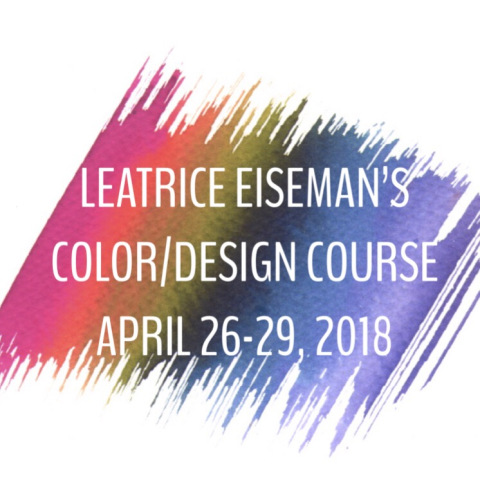 The Pantone Color Institute is a consulting service within Pantone that forecasts global color trends and advises companies on color in brand identity and product development, for the application and integration of color as a strategic asset. Recognized around the world as a leading source of color information through seasonal trend forecasts, custom color development, and palette recommendations for product and corporate identity, Pantone Color Institute partners with global brands to leverage the power, psychology and emotion of color in their design strategy.
The Pantone Color Institute is a consulting service within Pantone that forecasts global color trends and advises companies on color in brand identity and product development, for the application and integration of color as a strategic asset. Recognized around the world as a leading source of color information through seasonal trend forecasts, custom color development, and palette recommendations for product and corporate identity, Pantone Color Institute partners with global brands to leverage the power, psychology and emotion of color in their design strategy.
Subscribe to Lee’s COLOR BLOG Here.
Follow Lee Eiseman on Instagram
Thanks for joining me today! I invite you to take the challenge that Lee and I discussed. In the coming few weeks, please send me images of your floral designs featuring Ultra Violet botanicals so I can share them with Lee Eiseman. She’s eager to include a few of your images on her social media channels – and of course you’ll be credited and tagged. You can send images to me at debra@slowflowers.com.
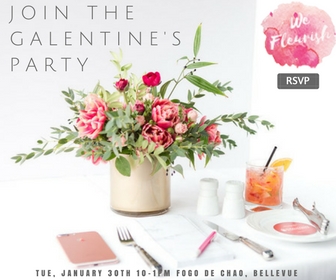 A bit of NEWS to Share: I want to let folks in the Seattle area know about an upcoming opportunity to meet and participate in a fun event I’m co-hosting as part of the We Fleurish Team, on Tuesday, January 30th in Bellevue.
A bit of NEWS to Share: I want to let folks in the Seattle area know about an upcoming opportunity to meet and participate in a fun event I’m co-hosting as part of the We Fleurish Team, on Tuesday, January 30th in Bellevue.
It’s called Galentine’s Party and the focus is on you and your personal and business branding as a creative. You’ll experience an art-filled, nurturing and stimulating pre-Valentine’s Day party as We Fleurish handles all the details.
We’ll take away the stress of planning and provide you with all the ingredients for relevant, eye-catching, personalized content – images and words – that reflect your brand and connect with your audience in the lead up to Valentine’s Day. In addition to a delicious meal provided by our venue Fogo de Chao, we’ll make sure you have resources, materials, tools and other supplies to make a romantic floral arrangement, style a flat-lay vignette, photograph a number of visual stories and write the best captions to wow your followers. More than half the tickets have been sold, so if you want to get in on the fun, follow this link to the Galentine’s Party!
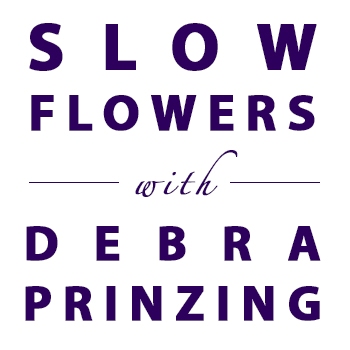 The Slow Flowers Podcast has been downloaded more than 271,000 by listeners like you. Thank you for downloading, listening, commenting and sharing — it means so much.
The Slow Flowers Podcast has been downloaded more than 271,000 by listeners like you. Thank you for downloading, listening, commenting and sharing — it means so much.
As the Slow Flowers Movement gains more supporters and more passionate participants who believe in the importance of the American cut flower industry, the momentum is contagious. I know you feel it, too. I value your support and invite you to show your thanks and with a donation to support my ongoing advocacy, education and outreach activities. You can find the donate button at debraprinzing.com in the right column.
Thank you to our sponsors who have supported Slow Flowers and all of our programs including this podcast, American Flowers Week, the Slowflowers.com online directory to American grown flowers, as well as our new channels, Slow Flowers Journal and the 2018 Slow Flowers Summit.
Thank you to our lead sponsor for 2018, Florists’ Review magazine. I’m delighted to serve as Contributing Editor for the new monthly Slow Flowers Journal section, which you can find in the pages of Florists’ Review. It’s the leading trade magazine in the floral industry and the only independent periodical for the retail, wholesale and supplier market. Take advantage of the special subscription offer for members of the Slow Flowers Community.
Certified American Grown Flowers. The Certified American-Grown program and label provide a guarantee for designers and consumers on the source of their flowers. Take pride in your flowers and buy with confidence, ask for Certified American Grown Flowers. To learn more visit americangrownflowers.org.
Arctic Alaska Peonies, a cooperative of 50 family farms in the heart of Alaska providing high quality, American Grown peony flowers during the months of July and August. Visit them today at arcticalaskapeonies.com
Seattle Wholesale Growers Market, a farmer-owned cooperative committed to providing the very best the Pacific Northwest has to offer in cut flowers, foliage and plants. The Growers Market’s mission is to foster a vibrant marketplace that sustains local flower farms and provides top-quality products and service to the local floral industry. Find them at seattlewholesalegrowersmarket.com
Longfield Gardens provides home gardeners with high quality flower bulbs and perennials. Their online store offers plants for every region and every season, from tulips and daffodils to dahlias, caladiums and amaryllis. Visit them at longfield-gardens.com.
Syndicate Sales, an American manufacturer of vases and accessories for the professional florist. Look for the American Flag Icon to find Syndicate’s USA-made products and join the Syndicate Stars loyalty program at syndicatesales.com.
Johnny’s Selected Seeds, an employee-owned company that provides our industry the best flower, herb and vegetable seeds — supplied to farms large and small and even backyard cutting gardens like mine. Check them out at johnnysseeds.com.
Association of Specialty Cut Flower Growers. Formed in 1988, ASCFG was created to educate, unite, and support commercial cut flower growers. It mission is to help growers produce high-quality floral material, and to foster and promote the local availability of that product. Learn more at ascfg.org
I’m Debra Prinzing, host and producer of the Slow Flowers Podcast. Next week, you’re invited to join me in putting more American grown flowers on the table, one vase at a time. And If you like what you hear, please consider logging onto Itunes and posting a listener review.
The content and opinions expressed here are either mine alone or those of my guests alone, independent of any podcast sponsor or other person, company or organization.
The Slow Flowers Podcast is engineered and edited by Andrew Brenlan. Learn more about his work at kinetictreefitness.com.









